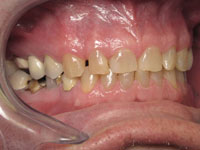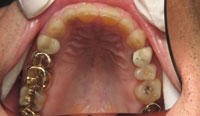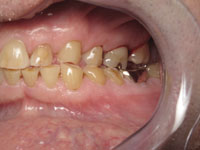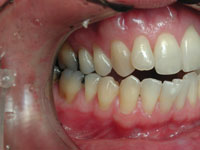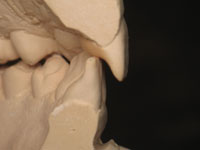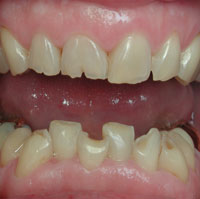INTRODUCTION
Occlusion is one of the most controversial subjects in dentistry and also one of the most important. Dental schools spend very little time teaching occlusal concepts, leaving a huge void in our knowledge of this critical area. After graduation, most of the sources of occlusal education teach the subject in manners that overburden learners with complicated, multimodule curricula, and strict philosophies. These approaches often make the process of treating occlusion appear more complicated than it should be. At the same time, occlusal disease in its many forms continues to ravage our patients’ teeth, making it the number one reason why our restorations fracture and fail.1
|
It is a great service for our patients, and a great asset to clinical dentists, to understand how to provide a physiological and mechanically sound occlusion. Fortunately, giving our patients a sound occlusion is not as complicated as it may appear.
Dentists treat patients with a variety of occlusal approaches, from the incredibly meticulous and complicated gnathological approach with a fully adjustable articulator and cusp tripodation to a myofunctional approach all the way to the overly simplified and imprecise natural bite approach. Each modality has a number of followers who believe and feel deeply that the way they do dentistry is the correct way and may even view the other “occlusal camps” as inferior and/or inappropriate.
This intolerance and narrow-mindedness creates an environment that is conducive to neither dialogue nor consensus. The interesting point is, at all spectrums of the scale, clinicians report success and patients do well. Of course, each approach also has its downsides and failures. The differences from camp to camp are many. They start from such things as beliefs surrounding the position of the condyle to issues concerning when the bite needs to be changed. All of the buzzing coming out of the different camps makes many dentists want to just stay away from occlusal treatment altogether; unfortunately, that is impossible, since many things that a dentist does can affects the occlusion of a patient. Fortunately, there are some basic physiological and mechanical rules (or principles) that will apply to any camp, and they are equal to all: the “3 Golden Rules of Occlusion.”2,3
This article will discuss these relatively simple and scientific-based goals of occlusal therapy. The 3 Golden Rules of Occlusion make the goals of occlusal therapy very clear and simple to comprehend and to define. In addition, when we understand these rules and apply them, it becomes evident that occlusion is very mechanical and not as complicated as some wish to make it, and this should make occlusion less intimidating.4 Fulfilling these 3 rules will give our patients a physiologically and mechanically sound bite and the treating dentist clear goals to attain.
The 3 GOLDEN RULES OF OCCLUSION
The 3 Golden Rules of Occlusion can apply to any occlusal philosophy because they are sound physiological and mechanical principles that have been proven by both scientific research and common sense. Nevertheless, when the patient requires occlusal therapy, or when there is a need to reconstruct a bite, the most practical, anatomical, and physiological sound place to position the condyle is into the centric relation position.
The first Golden Rule is to have bilateral and even occlusal contact. The masticatory muscles can generate huge forces, often several hundred pounds of force per square inch.5 For this reason, bilaterally even contacts throughout the dentition are mechanically sound, allowing for proper load distribution and a stable occlusion. When a tooth interferes with full closure, it will trigger deflective interferences6-8 and cause any of the 7 signs and symptoms of occlusal disease such as hypersensitivity, abfractions, mobility, excessive wear or fractures, and muscle or temporomandibular (TM) pain. Posterior teeth deflections may create an occlusal avoidance pattern leading to excessive anterior tooth wear (Figures 1 and 2). Also, in order for muscles to function in coordination, teeth need to contact evenly. It is possible to induce muscle incoordination by introducing an occlusal interferences as shown by Sheikholeslam and Riise.9 Additionally, although controversial in the scientific literature, clinical experience shows that occlusal interferences in centric can trigger muscle or TM discomfort, and that removing them will bring about improvement of the symptoms.10
The second Golden Rule is posterior teeth disclusion, or anterior and canine guidance. Anterior and canine guidance allows for the immediate disclusion of molars and premolars when making lateral or protrusive movements, such as in chewing. This immediate posterior disclusion provides some important mechanical benefits, in that masticatory muscles significantly decrease activity and the amount of force applied to the anterior guiding teeth is greatly decreased.11,12 Williamson and Lundquist13 found that when posterior teeth touch, the muscles can function with full force. On the other hand, when only anterior teeth touch, the forces decrease significantly. An additional mechanical benefit is that since the mandible works as a Class III lever, the further a tooth is from the fulcrum (joint), the less force is applied to it. When a patient lacks this mechanical benefit, during lateral movements, the posterior teeth grind over each other with full muscular force, and it is typical to see these patients with severe signs and symptoms of occlusal disease (Figures 3 and 4).
Finally, the third Golden Rule of Occlusion is an unobstructed envelope of function.14 During the chewing motion, the mandible does not only swing laterally, it swings forward (protrusively) during the closure movement, returning back into the centric stop. This is called the envelope of function. It varies from patient to patient, but Lundeen and Gibbs15 found that the average was 0.37 mm. The correct amount of overjet allows the space for this protrusive movement to occur without interference (Figure 5). When the overjet is insufficient, or the lingual morphology of the anterior teeth is not concave enough, interference to the anterior path of closure will occur. The consequences of violating this principle while restoring anterior teeth are that patients may complain that their bite feels high or locked in. This often triggers parafunction activity. Also, this interference in the path of closure may cause a scraping of the anterior teeth, resulting in the typical wear pattern, severe “thinning” of incisal edges, or wear of the lingual surface of the maxillary anterior teeth with wear of the facial of mandibular anterior teeth (Figure 6). It can also cause other problems, including mobility, chipping, and fracture of the teeth.
CONCLUSION
Having a clear vision for what a healthy occlusal outcome should be for restorative dentistry is priceless, and the same is true for occlusal therapy. This clear vision, along with defined goals, will allow the clinician to make clear decisions during diagnosis. It will also allow the professional to measure results at the end of treatment, as well as address the severe and rampant problem of occlusal disease.
The 3 Golden Rules of Occlusion are clear, simple, scientifically sound principles. They are physiological and mechanical sound principles that allow the dentist to increase the quality and predictability of any dental procedure.
References
- Ruiz JL. Achieving longevity in esthetic dentistry by proper diagnosis and management of occlusal disease. Contemporary Esthetics and Restorative Practice. 2007;11:24-27.
- Ruiz JL, Paul R. Practical occlusion for everyday dentistry. Dentaltown. 2009;10:48-56.
- Christensen GJ, Ruiz JL. Restorative dentistry: current developments and a look to the future. Dent Today. 2008;27:98-102.
- Christensen GJ. Abnormal occlusal conditions: a forgotten part of dentistry. J Am Dent Assoc. 1995;126:1667-1668.
- Gibb CH, Mahan PE, Mauderli A, et al. Limits of human bite strength. J Prosthet Dent. 1986;56:226.
- The concept of complete dentistry. In: Dawson PE. Functional Occlusion: From TMJ to Smile Design. St. Louis, MO: Mosby; 2007:6.
- Piehslinger E, Celar RM, Horejs T, et al. Recording orthopedic jaw movements. Part IV: The rotational component during mastication. Cranio. 1994;12:156-160.
- Gibbs CH, Lundeen HC, Mahan PE, et al. Chewing movements in relation to border movements at the first molar. J Prosthet Dent. 1981;46:308-322.
- Sheikholeslam A, Riise C. Influence of experimental interfering occlusal contacts on the activity of the anterior temporal and masseter muscles during submaximal and maximal bite in the intercuspal position. J Oral Rehabil. 1983;10:207-214 .
- Barker DK. Occlusal interferences and temporomandibular dysfunction. Gen Dent. 2004;52:56-61.
- Manns A, Miralles R, Valdivia J, et al. Influence of variation in anteroposterior occlusal contacts on electromyographic activity. J Prosthet Dent. 1989;61:617-623.
- Manns A, Chan C, Miralles R. Influence of group function and canine guidance on electromyographic activity of elevator muscles. J Prosthet Dent. 1987;57:494-501.
- Williamson EH, Lundquist DO. Anterior guidance: its effect on electromyographic activity of the temporal and masseter muscles. J Prosthet Dent. 1983;49:816-823.
- Dawson PE. Evaluation, Diagnosis, and Treatment of Occlusal Problems. 2nd ed. St Louis, MO: Mosby; 1989:28-55, 434-441.
- Lundeen HC, Gibbs CH. The Function of Teeth: The Physiology of Mandibular Function Related to Occlusal Form and Esthetics. Gainesville, FL: L and G Publishers; 2005:30.
Dr. Ruiz is the founder and director of the Los Angeles Institute of Aesthetic Dentistry, where he teaches workshops on adhesive and aesthetic dentistry, and occlusion. He is past director of the University of Southern California’s Aesthetic Dentistry Continuum (from 2004 to 2009), associate instructor at Dr. Gordon Christensen’s PCC in Utah. He has had a full-time private practice in the Studio District of Los Angeles for more than 18 years. Dr. Ruiz has published several research studies in the area of adhesive dentistry, many clinical articles, and lectures internationally. He graduated from Universidad National Autonoma de Mexico in 1997. He has made numerous television appearances highlighting his aesthetic dental makeovers, including NBC’s Channel 4 News, ABC’s Vista LA, and Univision and Telemundo. He can be reached at drruizonline.com or via e-mail at ruiz@drruiz.com.
Disclosure: Dr. Ruiz reports no conflicts of interest.



